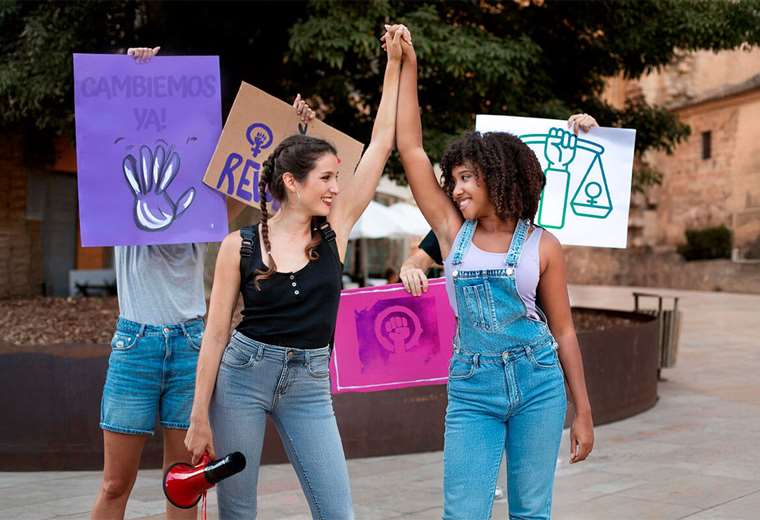October 18, 2024, 8:27 AM
October 18, 2024, 8:27 AM
Unity is strength, the saying goes, and in the case of activism this maxim comes true. With multiple challenges ahead, the world presents a paradoxical panorama, since despite its problems there are numerous organizations championing their causes and seeking solutions to the existing crises.
However, many times, these organizations, despite having noble and fair ideals, do not have the necessary dissemination and support, so uniting with other like-minded activists becomes an effective strategy to advance solutions.
“Unified activism seeks to generate positive changes in our society through the union of related organizations or that pursue the same cause, through certain actions or activities. By having greater strength in numbers, activists can be more effective and creative when it comes to taking actions to generate changes,” says journalist and professor of the Journalism program at the Franz Tamayo University, Unifranz, Carlos Lara.
The World Economic Forum (WEF) indicates that unified activism is a powerful tool to amplify social change. It refers to a collaborative effort in which individuals, communities and organizations combine their resources, experience and influence to amplify impact.
“While successful activism efforts abound, stories of unified activism are less common. Where unified activism has been implemented, the results have been transformative,” explains the global organization.
Through unified activism, voices can, for example, be amplified, as a unified front makes it difficult for governments, politicians and influencers to ignore the cause.
For example, Greta Thunberg’s climate action began with her lone protest outside the Swedish Parliament and quickly gained global momentum as millions joined her in demanding climate action from their governments. The unified voice of this movement captured the world’s attention and put climate change at the forefront of the global agenda.
Likewise, by having greater dissemination, it can influence mentality and behavioral change. By being a collective front, trust and credibility of the cause is strengthened and diverse perspectives are normalized, by reinforcing narratives through repetition, leading to large-scale change.
The campaign for equal marriage in the United States is a clear example. By framing the conversation around shared values such as love, family, and commitment, the campaign garnered national support, ultimately leading to the Supreme Court granting same-sex couples the right to marry.
Members’ complementary skills and resources are also better utilized.
“Collaborating allows allies to leverage their strengths while compensating for their limitations. This approach encourages innovation and reduces duplication of effort. The Immigrant Resilience Collaborative exemplifies this by combining the strengths of government, the private sector and civil society to ensure secure employment and social security for vulnerable migrant workers,” says the WEF.
These benefits, in turn, make it possible to facilitate policy changes. Unified activism can lead to significant policy changes by creating a compelling evidence-based narrative.
“As an example, we can see what was achieved through collaboration between indigenous peoples and allied organizations to force stricter environmental standards, the Sacred Amazon Basins Initiative managed to stop a harmful Forest Law project in Peru and obtained a referendum to stop the extraction of oil in Ecuador’s Yasuní National Park, protecting vital ecosystems and indigenous lands,” explains the international organization.
However, despite the advantages, it is important to understand that achieving systemic change requires patience, persistence and a long-term perspective.
The WEF notes that achieving systemic change requires patience, persistence and a long-term perspective. Unified activism, when harnessed effectively, has the potential to amplify the development discourse, making this century one in which we collectively build an equitable and sustainable future for all.
Impact of technology on unified activism
Technology has revolutionized the way organizations engage and collaborate in activism. Social media platforms such as Twitter, Instagram and TikTok became outlets for protests. Viral hashtags and online campaigns prove to be effective tools to raise awareness and mobilize large audiences and join forces
“Social networks and technology are essential, because they are the channel to make your proposals heard and amplify your reach. On the other hand, these social networks allow them to interact with activists in other parts of the world and learn new strategies that can be adapted to their country,” says Lara.
Movements such as #BlackLivesMatter and #FridaysForFuture gained global attraction thanks to dissemination on social networks. Activists use these platforms as sounding boards and not only to share information, but also to organize events, raise funds, and pressure political leaders.


















